|
Laughing Gull Larus atricilla Gaviota Gallega,
|
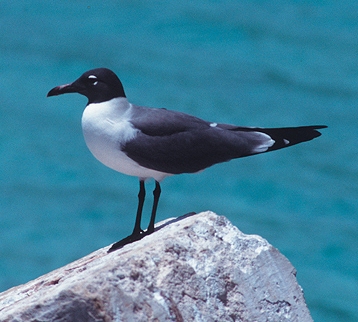 |
|
Photo: L. Miranda Castro
|
|
Laughing Gull Larus atricilla Gaviota Gallega,
|
 |
|
Photo: L. Miranda Castro
|
|
IDENTIFICATION: The Laughing Gull has a different plumage in each of the first three years. The adult is white below and dark gray above with black wing tips; in breeding plumage it has a black head and dull red bill. In winter plumage it lacks the black head, and the bill color is black. In the first winter, the immature has a light gray back, brown wings, and a broad black band at the end of the tail. Length: 39-46 cm.; weight: males 338 g., females 289 g. VOICE: Slow bursts of "laughter"; a high-pitched, begging call note when a flock is feeding. Audio 2 (M. Oberle). HABITAT: Marshes, tidal flats, and coastal marine waters; also feeds at municipal garbage dumps and sewer outfalls, and follows fishing boats looking for scraps. Nests on isolated sandbars and rock islands. HABITS: Travels in flocks, and feeds on fish, plus crabs, worms and other marine invertebrates, snails, insects, and garbage. It plucks food off the surface of the water or sometimes surface-dives. The Laughing Gull also preys heavily on eggs and young chicks of several tern species. It sometimes lands on the back of a pelican to rob food from the side of its mouth, and will also chase terns to rob food in mid-air. In turn, the frigatebird robs food from the gull. On nesting islands, pairs put on an elaborate courtship dance. The nest is a grass-lined scrape on a vegetated beach, or shaded patch on a rocky island, sometimes near a colony of other seabirds. Both sexes incubate the 2-4 mottled green eggs for 24-28 days. Within a few days of hatching, young chicks can distinguish their parents’ calls from other gulls.’ Chicks move a short distance from the nest to seek shade, and are fed by the adults until two months of age. They fledge at 35-50 days but may stay in the nesting colony for several weeks afterwards. After breeding, the Laughing Gull will travel among different islands searching for food. STATUS AND CONSERVATION: The common gull of coastal Puerto Rico, but is more often seen starting in late March, as wandering individuals return to breed. This species was greatly reduced in the 19th Century due to hunting for feathers and eggs. Nests on isolated offshore rocky islands around Culebra, La Cordillera Nature Reserve, Mona, and Monito, where it is protected from ground predators. The West Indian breeding population is estimated at 5,000-10,000 pairs. RANGE: Nests from Nova Scotia south throughout the Caribbean Basin, and also on the northwest coast of Mexico to Sonora. Caribbean birds don’t travel far, but northern breeders winter south to Peru and the mouth of the Amazon River. A common species in San Juan harbor and throughout coastal Puerto Rico and adjacent islands, especially between April and September. TAXONOMY: CHARADRIIFORMES; LARIDAE; Larinae |
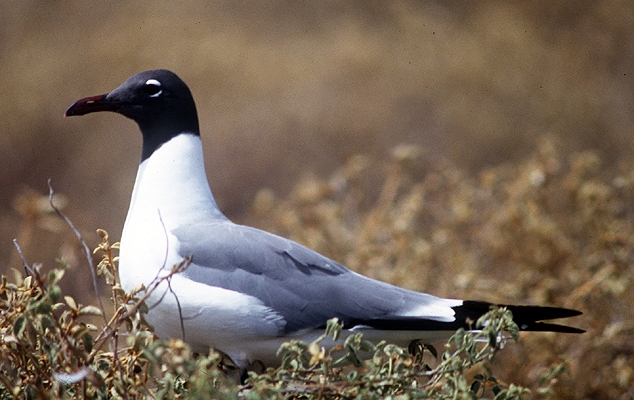 |
|
Photo: J. Saliva
|
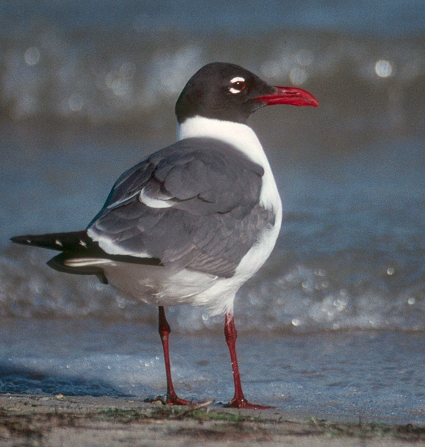 |
|
Photo: G. Beaton
|
 |
|
Photo: A. Sánchez Muñoz
|
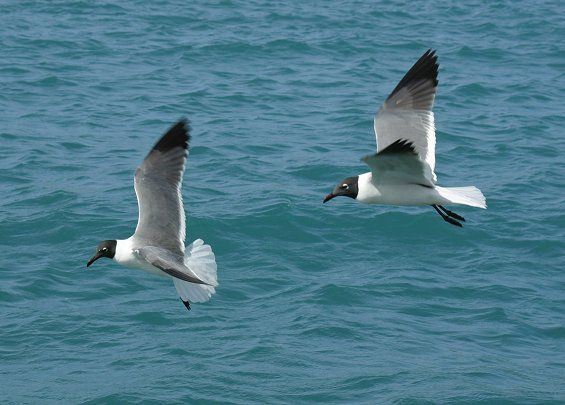 |
|
Photo: A. Sánchez Muñoz
|
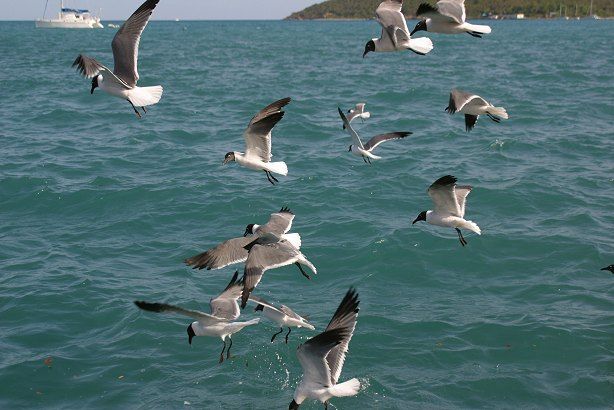 |
|
Photo: A. Sánchez Muñoz
|
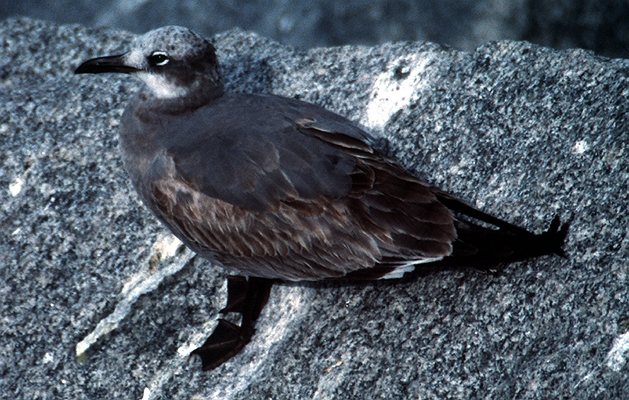 |
|
First winter immature - Photo: G. Beaton
|
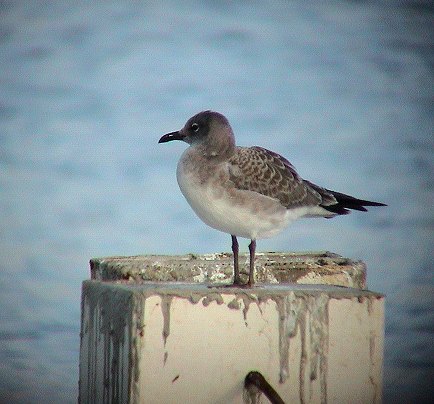 |
|
Photo: R. Rodríguez Mojica
|
 |
|
2nd winter immature - Photo: G. Beaton
|
|
References Bent, A.C. 1921. Life histories of North American gulls and terns. Smithsonian Instit. U.S. National Museum Bull. 113. (Reprinted by Dover Press, 1963). Burger, J., and M. Gochfield. 1985. Nest site selection by Laughing Gulls: comparison of tropical colonies (Culebra, Puerto Rico) with temperate colonies (New Jersey). Condor 87:364-373. Burger, J. 1996. Laughing Gull (Larus atricilla). No. 225 in The birds of North America (A. Poole and F. Gill, eds.). Acad. Nat. Sci., Philadelphia, PA, and Am. Ornithol. Union, Washington, D.C. Chardine, J. W., R. D. Morris, J. F. Parnell, and J. Pierce. 2000. Status and conservation priorities for Laughing Gulls, Gull-billed Terns, Royal Terns and Bridled Terns in the West Indies. Pp. 65-79 in Status and conservation of West Indian seabirds (E. A. Schreiber and D. S. Lee, eds.). Soc. Carib. Ornith., Special Pub. No. 1. del Hoyo, J., A. Elliott, and J. Sargatal, eds. 1996. Handbook of Birds of the World, Vol. 3. Hoatzin to Auks. Lynx Edicions, Barcelona. Ehrlich, P.R., D.S. Dobkin, and D. Wheye. 1988. The birder’s handbook: a field guide to the natural history of North American birds. Simon and Schuster/ Fireside, NY. Grant, P.J. 1997. Gulls: a guide to identification, 2nd Ed. Academic Press, NY. Harrison, P. 1983. Seabirds: an identification guide. Houghton Mifflin, Boston. Harrison, P. 1987. A field guide to seabirds of the world. Stephen Greene Press, Lexington, MA. Kepler, C.B. 1978. The breeding ecology of sea birds on Monito Island, Puerto Rico. Condor 80:72-78. Raffaele, H.A. 1989. A guide to the birds of Puerto Rico and the Virgin Islands. Princeton. Raffaele, H.A. 1989. Una guía a las aves de Puerto Rico y las Islas Vírgenes. Publishing Resources, Inc., Santurce, PR. Raffaele, H.A., J.W. Wiley, O.H. Garrido, A.R. Keith, and J.I. Raffaele. 1998. Guide to the birds of the West Indies. Princeton. Saliva, J.E. 1994. Vieques y su fauna: Vieques wildlife manual. U.S. Fish & Wildlife Service, Boquerón, PR. Schreiber, E. A. and D. S. Lee. 2000. West Indian seabirds: a disappearing natural resource. Pp. 1-10 in Status and conservation of West Indian seabirds (E. A. Schreiber and D. S. Lee, eds.). Soc. Carib. Ornith., Special Pub. No. 1. Schreiber, E. A. 2000. Action plan for conservation of West Indian seabirds. Pp. 182-191 in Status and conservation of West Indian seabirds (E. A. Schreiber and D. S. Lee, eds.). Soc. Carib. Ornith., Special Pub. No. 1. Wiley, J. W. 2000. A bibliography of seabirds in the West Indies. Pp. 192-225 in Status and conservation of West Indian seabirds (E. A. Schreiber and D. S. Lee, eds.). Soc. Carib. Ornith., Special Pub. No. 1. Next related species in taxonomic order Previous related species in taxonomic order |